Supernatural Aging: When Does It Count?
When does aging matter when it comes to fantastical storytelling? Do we only ponder it when seeing certain characters pursue other characters romantically or sexually? Should a person’s or character’s true age play a role in who they are, how they navigate the world, and how they behave? Many creators and fans alike have argued, in one way or another, that it all depends based on your imagination and the rules of the world.
Does Age Matter?
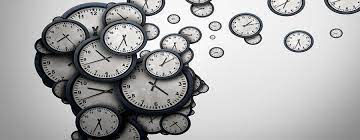
How does aging impact us? What shows we have aged beyond obvious physical changes? Many would say that memories, experiences, personal growth, and personality development are among the most obvious factors impacted by time and events. Some might argue that it is these things, far beyond our appearances, that make us who we are.
But what happens if someone gets total amnesia? What if they can’t remember their life, achievements, failures, or loved ones? Are they still the same person? Even if they never get their memories back?
Aging is not just physical, but also mental. Yet we tend to judge and focus on the physical. What happens if someone falls into a coma and comes out of it many years later? What if they wake up physically aged but mentally they are still the same age they were when they fell comatose? What age do we say they are? If we say they are and must be their physical age, how do we get them to that age mentally? Is such a thing even possible?
Perhaps not as important as the other factors mentioned before, but appearance does matter when it comes to how we view ourselves (assuming we have the ability to see), and (unfortunately) how others see us. It also plays a role in how we see ourselves grow, change, and age. What happens if our appearance changes radically and we are virtually unrecognizable? What if our voice becomes unrecognizable? Is there something more beyond our appearance or our personalities that make us who we are?
Do you believe there is a soul? Consciousness beyond the mental? Something difficult to define that works in tandem with our bodies and minds? Is it the secret third ingredient that really makes us, us?
Many different creators have approached these questions and topics with their works and characters for all time. It has always been interesting to see how the rules of a creator’s world and the way their characters interact with the world inform the way aging and personhood work. Let’s explore some examples.
There will be spoilers for the following properties: Interview with the Vampire (novel), Buffy the Vampire Slayer (tv series), the Twilight films, The Vampire Diaries/The Originals (tv series), Batman comics, Inuyasha, Yashahime: Princess Half-Demon, the tv series Gotham, and the Green Lantern comics.
Vampire Aging
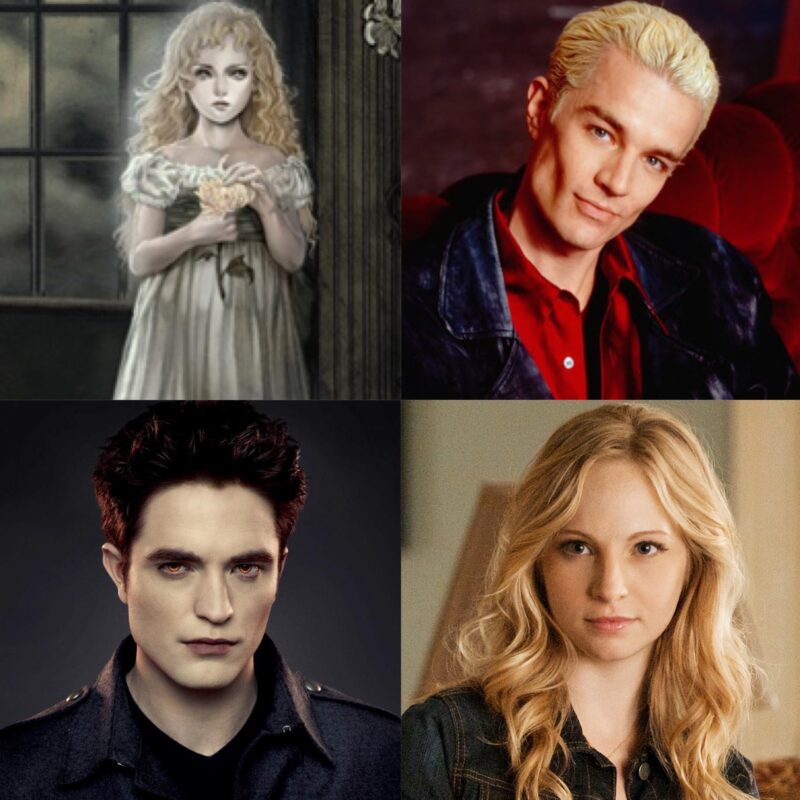
Most writers and creators of vampire content agree that vampires do not age. They are (usually) undead and frozen at a specific point and age in time, that time being the moment they became a vampire. The process of becoming a vampire and becoming undead is almost universally recognized as the death of the human before becoming a vampire.
Claudia from Interview with the Vampire has always been one of the most fascinating and simultaneously tragic examples of a vampire in all of literary fiction. In the original novel, she was a five-year-old girl who was turned by an adult male vampire (Lestat) into an eternal vampire child in order to keep his love (Louis) around by giving him a family. Vampirism in general is at its core a violation of consent: most vampires turn others without asking for their consent or wondering whether or not it would be right to turn them or if they would like the eternal darkness of the life of a vampire (and even if turned at their consent, most humans can never truly understand what becoming a vampire will truly be like for them, and thus have no way of becoming human again if they don’t want it after the fact, most times). Claudia’s feelings or what would eventually become her feelings were never taken into consideration when she was turned. She was merely a pretty doll, an object that could stay young and cute forever and create the perfect family. It didn’t. Instead, Claudia’s body was frozen as a small child, but her mind grew and aged to that of a grown woman. She developed rage, resentment, bitterness, desire, and other emotions that could never be fully explored due to being stuck in the body of a little girl. She hated her maker, she plotted to kill him and almost succeeded. The story ends with her death after escaping him and falling into the hands of the wrong enemies.
While Claudia presents an alarming idea for many people who have hoped to stop the aging process, even adult vampires in Anne Rice’s novels who have better situations than hers often lament the sheer loneliness that often comes with being a vampire. Otherwise, Rice manages to make them seem like people who have lived impossibly long lives and come across as older than they look, often with speech and word choices among other things. However, many other works would create vampires that prioritize sex appeal and coolness over any potential drawbacks. Vampires like Angel or Spike from Buffy the Vampire Slayer or Edward Cullen from the Twilight franchise are meant to be easily over 100 years old, yet behave like people are the ages they appear to be. When vampires like Edward or Angel fall in love with and enter relationships with teenage human girls, do we think of them as young as they appear to be, or old as they truly are? There are fans who believe Edward in particular to be “mentally” 17 as well as physically. How? It’s unclear, perhaps it helps them reconcile the inherent creepiness of someone several times the age of the love interest, despite looking roughly the same age as her. It certainly helps if the vampire doesn’t act incredibly old or long-lived or come across as stuffy or boring, or jaded in a way that would put most people off. How does an old soul find such excitement being around what is quite literally a baby in comparison? It seems far more likely that only other immortals could relate.
Then we get to the young vampire. The one turned yesterday or only a few years ago. These vampires acting the age they look makes the most sense because they essentially are the ages they look. These vampires are often some of the most enjoyable to witness, for they get enamored by the superpowers and advantages that vampirism provides, and also usually act as a gateway of exposition of how the rules of vampirism work within a given medium. Caroline Forbes of The Vampire Diaries is one of the most prominent examples of this. In a franchise where almost every other vampire either whines like a bitch (Klaus), aspires to go to the prom at 1,000 years old (Rebekah) or otherwise exhibits the same daddy and mommy issues they’ve had for centuries, Caroline as well as Elijah Mikelson are two of the only vampires who act accordingly. Caroline is the young vampire living her best life and thriving, while Elijah is the only vampire who is old and manages to come across as an old soul who is world-weary and the picture definition of mature. The only thing is that since TV shows can go on for many seasons, and thus years, at a time, you often get situations where vampires who are meant to be frozen at certain ages visibly age as the seasons go on because actors still age. Either way, one must suspend their disbelief and the writing must reinforce that stage in life they are at (assuming the creator cares about accuracy).
Either way, we see that, when done well, aging in vampirism is purely mental. It happens, just not the same way for humans. It happens because, while not physically growing or changing, vampires are still aware and are seeing and experiencing the world around them develop and change around them. Whether they adapt to or reject this change, varies, but their minds are still developing.
Frozen in Suspended Animation/Sleeping Curse/Coma/etc.
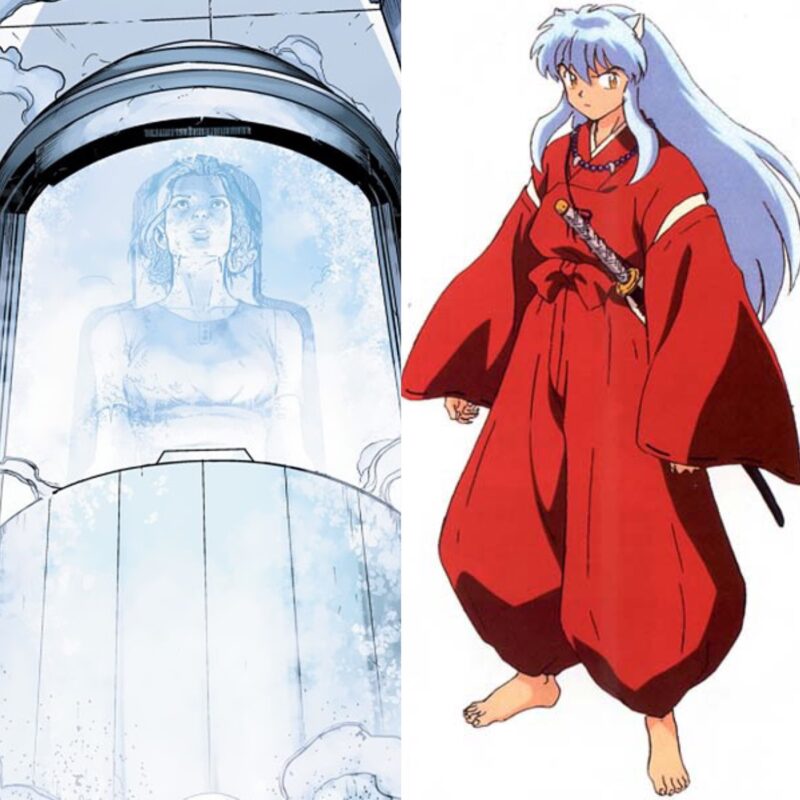
What happens if you are frozen in time, suspended animation, a mystical curse, or the like? Physicality aside (which may or may not vary anyway depending on the circumstances), you are not aware of the world or anything around you. You are not learning or growing. You are basically dead, in the literal sense.
The New 52 imprint of DC Comics was controversial and panned over many changes to beloved canon, and one of them was the backstory and main motivation of Mr. Freeze. Rather than a man freezing his wife to try to find a cure to cure her terminal illness, instead, she was a woman named Nora Fields born in the early 40s who never even met him. He had been studying her and one day decided he was in love with her, thought of her as his wife, and became obsessed with her. When confronted with this knowledge, it was said to Victor Fries that “she’s old enough to be your grandmother”. But that’s not exactly true. Whether physical aging matters to you or not, she’s not physically aging, and she is also completely unaware of the world and is basically asleep or dead, unable to wake and experience anything unless unfrozen. Even if we age, grow, or change around her, she isn’t. At best, if she ever awakens, she’ll be greeted by a radically different world completely unfamiliar to her and realize her life literally passed her by.
This is similar, at least mentally, when it comes to coma patients or characters in sleeping curses like Sleeping Beauty. You may or may not age physically, definitely if it’s a normal coma, and maybe depending on the nature of the curse, but you are still cut off from the world where all of your development stops. Without getting into the complete lack of consent concerning Sleeping Beauty, let’s segue into another uncomfortable topic: anime.
Inuyasha features many demons and half-demons who all age either incredibly slowly or not at all. It has been allegedly said by the creator of the original manga that Inuyasha himself was between 150-200 years old when he first met Kikyo, and then roughly 200-250 years when he met Kagome after he was pinned to a tree and cursed to sleep (or maybe die..?) for 50 years while he remained pinned. Yet for some reason, despite establishing Inuyasha and his older brother Sesshomaru as being far older than they look, the creator allegedly claimed that they both physically and mentally have the age fifteen and nineteen, respectively. How would that even work? Do demons and half-demons view human years/aging differently from humans? And why not just establish them as being fifteen and nineteen in human years since the main goal is to have the title character fall in love with a teenage girl? At least when Inuyasha met Kagome, he didn’t first meet and spend time with her any younger than fifteen (which he allegedly is himself, mentally)… but more on a worse scenario later. If you know, you know.
Slowed Aging
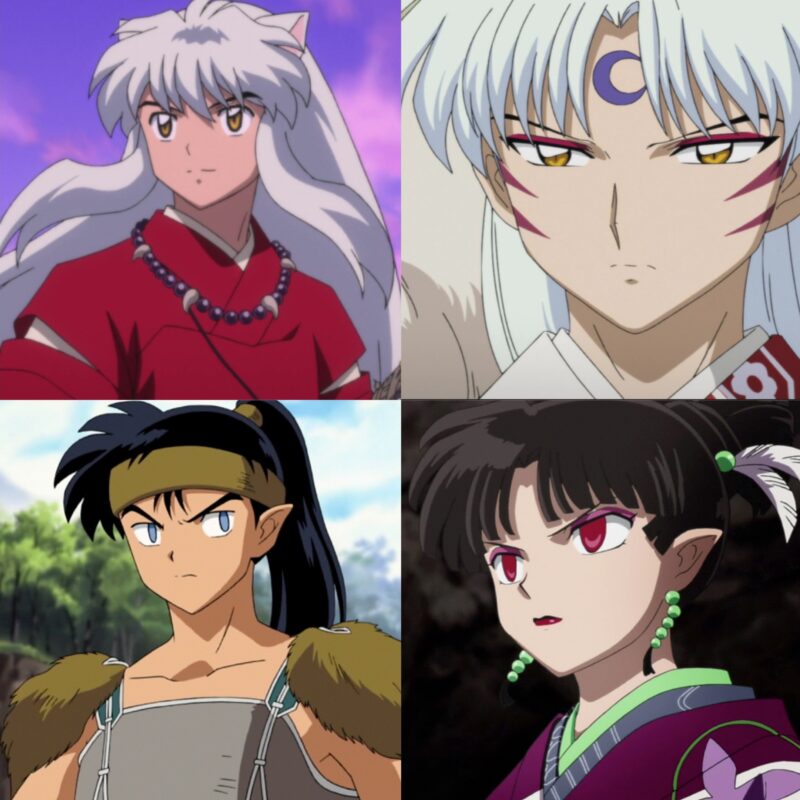
As mentioned before, the demons and half-demons of Inuyasha age incredibly slowly. While they appear to be young adults, they have existed in human years for several human lifetimes, likely most of them. Rumiko Takahashi, the original creator of the manga, maintains in her blog, in the Inuyasha Companion (at number 12 here) that Inuyasha, Kagome, and Koga (they’re in a love triangle of sorts) are 15 (mentally and physically, but not in actual years in the case of the boys, literally and completely for the human girl). Miroku is 18, and Sango is 16, and they are love interests who eventually marry. Kikyo was 18 at the time of her death. Sesshomaru is mentally and has the physicality of a 19-year-old, while Kagura is mentally and has the physicality of a 17-year-old, which I find hilarious because they both seem much older than that. Kagura’s voice actress and her design make her come across as at least 30. Same with Sesshomaru. Only shrill and annoying Kagome comes across as her actual stated age. Curiously, this list excludes Rin, a child accompanying Sesshomaru for most of the series. Most sources state she was about 6-8 years old when she first met Sesshomaru and joined him on his quest.
The reason slowed aging and “mental age” or mindset are so fascinating is the way in which some of the relationships play out. Inuyasha and Kagome end up married and have at least one child. Some fans argue that girls and women marrying and bearing children during the Japanese Feudal Era, where most of the action takes place (Kagome hails from the present time, set in maybe the late 90s or mid-00s and is able to travel back and forth from her time to the Feudal Era) would have been normal due to life expectancy being so much lower at the time. While that may be true, animes and mangas created in the present time are subject to present-time sensibilities and standards.
Yashahime: Princess Half-Demon was the highly anticipated sequel to the Inuyasha anime whose premise involved fan-favorite Sesshomaru’s twin daughters as the protagonists joined by Inuyasha and Kagome’s daughter. It was quickly revealed that Sesshomaru’s daughters would be half-human, which caused speculation that Rin, the child he looked after and traveled with during the original series who was also the only human he cared about (as Sesshomaru hated humans) might be the mother, as the sequel takes place in the future. It was eventually confirmed that Rin was the mother and sources say that she married Sesshomaru and had his babies between the ages of 16-18.
Even if going off of the original manga creator’s intention, Sesshomaru was functionally 19 and Rin was 6-8 when they first met. They spend some time together where he looked after her, protected her, and made sure she ate and was well put together. Rin was a child whose parents had been killed by bandits. She had been filthy and down bad. When we next see her with Sesshomaru, she is cleaner and has a new kimono, clearly, he got one for her. Let me take this time to say that, in my first viewing of the series long before the Yashahime revelation came about, nothing about Sesshomaru’s interactions with Rin ever came across as creepy or predatory. Fans who support Sesshomaru and Rin eventually marrying claim that they never had a father-daughter relationship and that at best she followed him around instead of him taking her traveling with him. They also feel that being 16-18 to marry and bear children, again in the Feudal Era, was common and that at the end of the original anime he left Rin to live with Kaede. However, Sesshomaru also frequently visited Rin after this and gave her gifts, which certainly defeats the argument that he cared nothing about her and had no kind of close relationship with her (be it brother-sister, or father-daughter, depending on how you choose to view it). Some fans would even try to claim Jakken was more so the father figure and caregiver of Rin during their travels, but this is laughably false. Jakken gave not one solitary shit about Rin and didn’t like her. He only worried about her safety and helped her because Sesshomaru threatened his life if he didn’t protect her. If it was up to Jakken, she would have been abandoned the moment they met her as he only cared about Sesshomaru.
No matter what mental gymnastics you try to perform to rationalize or justify Sesshomaru and Rin later marrying and having children together, whether you deem it grooming or not, or whether you define his age as 19 instead of well over 100 years old, the basic fact is that they met when she was a literal small child. That is all you need to know, and this story element never needed to happen. For all the shit he gave Inuyasha for being a half-human, I don’t buy he would willingly produce half-humans. I don’t even think Sesshomaru was interested at all in procreation, sex, or romance whatsoever, but that’s another topic entirely.
Aging Up/Aging Down
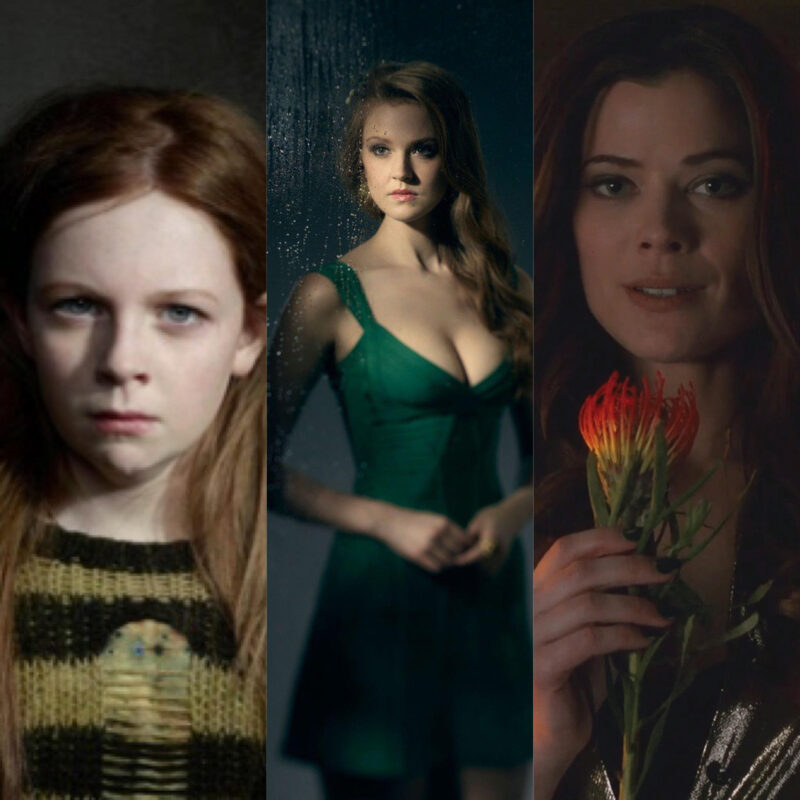
Characters getting aged up or aged down by various means, be it scientific or mystical, is another concept seen many times. Time travel, magic spells or potions or curses, scientific formulas or experiments gone right or wrong, wishes, holy grails or fountains of youth, there are many ways in which these things might occur. What we don’t always consider is what becomes of the mind or mental state of the person being aged up or down. Time travel is tricky because for those not traveling it, a character seemingly aging rapidly comes across as such for them but for the character, they lived a life for years and aged normally and just went forward or back in time. It still begs the question of how the person who knew them at a certain age should see or feel about them. The Time Traveler’s Wife (film or series) might be an interesting take on how others deal with this sort of phenomenon.
If time travel is not utilized, how do we recognize or reconcile characters who are rapidly aging up or down in other ways? Gotham was a tv series set before Bruce Wayne became Batman, featuring Bruce as a child just after the murder of his parents and a younger Jim Gordon just moving to Gotham and joining the GCPD. We meet various younger (and sometimes not) versions of characters we recognize as key characters in Batman’s stories. One such character was Ivy Pepper, a reimagining of Pamela Isley aka Poison Ivy. Let me get this out of the way now. I hated that they named her Ivy Pepper. It’s as if they thought the audience was stupid and wouldn’t know that Pamela Isley, even if not called Poison Ivy yet, would in fact be the same Poison Ivy but younger. They even easily could have had Ivy as her nickname while her true name was still Pamela Isley.
Anyway, Ivy here was an odd friend of the young Selina Kyle (who was often called ‘Cat’, so they understood with her. *Sigh*) who eventually got aged up when a metahuman villain who had the power to rapidly age people to the point of withering death, held onto her until she broke free and fell. The touch aged her just enough so that she was a bit older, but obviously not dead. The writers gave the reason for aging up Ivy as wanting to tell traditional seductress Poison Ivy storylines but not involving a child actor doing them. While, thanks, also gross. While physically aging up, the child is still a child. She didn’t grow or develop in any meaningful way, she literally aged in an instant, against her will. Even in the so-called “seduction” storylines, the writers still kinda knew they couldn’t go all out. So rather than her going around kissing people to poison them or generally using pheromones to seduce in the most obviously sexual connotations (or at least the desires were obviously sexual in nature, whether or not you believe Ivy in the comics was sleeping with people she entranced with her pheromones), instead we see Ivy using pheromones and people saying “she’s so cool” instead of things like “she’s so hot”. They still come across as spellbound, but it’s cushioned.
Even further, Ivy goes through a metamorphosis where she becomes even more physically older, and this time is performed as seeming more like an adult. They still don’t fully commit to the entire seductress route in the most obvious way, until she starts targeting Bruce and tries to poison him (and I think kiss him..? It’s been a while since I’ve watched. Either way nothing happens beyond that and he’s not interested in her at any point, pheromones or not). Some might see the grown actress seeming to be interested in this young teen actor and be creeped out, but in context, it would be far creepier if the same exact character was shown kissing or interacting with an adult character because, in fact, the character is Bruce’s age still.
Another infamous DC aging up was Arisia Raab from Green Lantern. I won’t say much here for the sake of time, but it’s even worse. Cliffnotes: she was a young minor alien girl who was in a little sister/big brother type relationship with Hal Jordan who eventually developed a crush on him. No big deal. One day she, herself a lantern, uses her ring to age herself up physically, somehow, and claims to Hal that not just her body but her mind grew. Sure, Jan. Hal proceeds to sleep with her in a cave and they become a couple for quite a while after the fact when other writers either didn’t care or didn’t realize how creepy it was. She was definitely a child even if she didn’t present like one.
In Conclusion
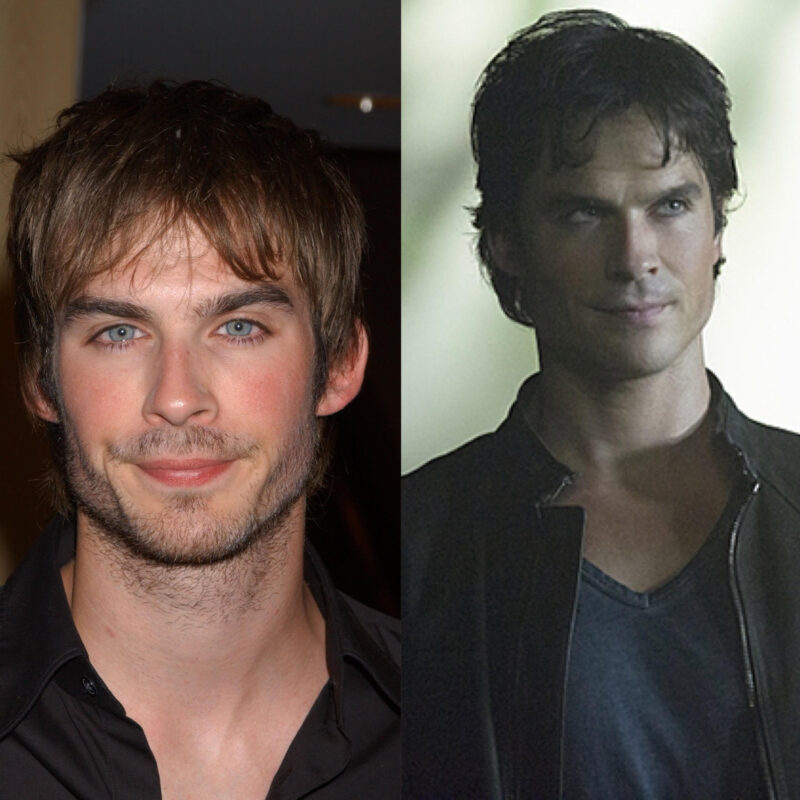
When it comes to fiction and aging as well as possibly other factors like casting, in the end, it all falls to the creator to decide what goes or doesn’t go. They establish the rules and they say what is or isn’t true and it’s up to us to decide whether to play along or not. What they cannot do is stop us from forming our own opinions or coming to our own conclusions or analyses even beyond what the creators themselves intended. As I always say, we all see art differently and can stare at the same painting and all see different things.
Age is subjective in many ways and is a man-made concept, but it is a concept that in many ways makes sense and protects us when it counts. We don’t need grown humans interacting with a way-too-young human in inappropriate ways when they cannot fully consent to understand the full weight of the consequences or potential consequences for said interactions. Fantasy is just that, a fantasy, but it is also important to understand and unpack why youth is forever being seen as the goal: whether to have it ourselves or to seek it to love. Why do so many vampires in stories go for teenage minors? What would they possibly have in common? And as for the Twilight vampires, why were they willingly going to high school over and over again? Why did it (presumably, don’t ask me if it did or didn’t, I’m not a Twi-hard like that) stop only when Bella graduated, aged a little, got married, had a demon spawn that almost killed her, and then became a vampire herself? Side note, I love YA content for the mess, the drama, the way to live vicariously in ways I felt I couldn’t (being closeted and afraid as a teen), and to judge fictional characters for the shit they do. I love female-led YA content because they make me the happiest. But Twilight, while it was undeniably a moment, had issues I can’t shake that have nothing to do with it being content aimed at young women. I’m queer, I won’t be chastized for critiquing a white woman’s storytelling (and a Mormon at that, whose beliefs bleed all up and through the series), especially when it ended with heavily implied impending grooming (Renessme and Jacob) and glorified the confederacy (Jasper). Julie Plec and the Vampire Diaries writing team are also not seeing heaven for all the confederate imagery and concepts that didn’t need to be there (Stefan and Damon in the books weren’t even Americans turned in the Civil War, but Italians turned during the Italian Renaissance. They chose to make Damon a confederate soldier (later retconning to confederate loafer and deserter), and to treat Bonnie Bennett, their sole main Black character, like utter shit for the entirety of the series.
Nevertheless, the way we conceptualize and analyze content depends on us and who we are. Maybe you feel differently about the points I’ve made here. Perhaps for you, age is just what you appear to be or identify as. Perhaps the demons of Inuyasha, despite existing for hundreds of years, make perfect sense to have the mentality of teenagers, if for nothing else to justify their relationships with human teenagers. Maybe you feel that if you’re frozen, you really are as old as you are because you’ve existed for that long and people know it. When you rapidly age up or down, does your mind follow? We can’t always agree, and that’s fine. But let’s discuss! Leave a comment or reach out on social media to share your thoughts on any or all of these concepts or if I missed anything else in relation to superhuman/supernatural aging.
Be the first to leave a review.
Your browser does not support images upload. Please choose a modern one
I identify as a womanist. I also identify as both gay and queer. I am gender fluid and respond to he/him, she/her, and they/them. I am a Black American-Descendant of American Chattel Slavery who is pro Black Diaspora and pro creating Global Black Strongholds (Blacks across the Diaspora holding it down in each region to allow all Blacks to go to each, and be safe and in community together). I am a comics, tv, movie, and video game stan. My expertise for comics and related media are DC Comics, Marvel Comics, Archie Comics, and a little bit of others here and there, but I'm hoping to branch out to other, Blacker and indie comics and related content. I'm a binge watcher and can talk about shows and movies for days. You can find me on YouTube and various other social media platforms as thaboiinblue.

1 Comment
Leave a Reply
Cancel reply
Leave a Reply
This site uses Akismet to reduce spam. Learn how your comment data is processed.



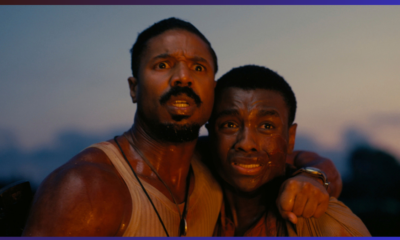













Pingback: Adults: Thirsting Over Underage Characters is Weird